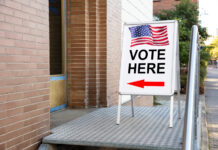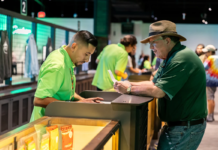By 2025, the CBD consumer market is projected to generate more than $26 billion in revenue. That means more product selection, but also more competition. As CBD becomes more mainstream, creating a campaign that stands out from the crowd will be critical for growth and continued success. When done correctly, a digital marketing campaign can increase sales, increase brand and product awareness, and create loyal repeat customers.
Dive into data
In a saturated digital market, effective use of data is a non-negotiable key to success. The tool will help you effectively identify, attract, and retain business.
At the outset, market research will provide baseline guideposts for building your product and campaign. The more detailed you get, the more specific, targeted, and effective your campaigns will be from the very beginning. Here are a few core insights from New Frontier Data every CBD marketer should know:
- Eighteen percent of Americans have tried CBD, and users consistently skew young, with 18- to 34-year-olds being the most common users. However, the over-55 age group are twice as likely to be daily users.
- The three most popular form factors for CBD, in order, are oil/tincture, food/edibles, and topical/external. Gummies are seeing a surge in popularity.
- The COVID-19 pandemic caused a big jump in CBD consumption, particularly in gummies. About half of Gen Z and Millennials used CBD more frequently during the pandemic.
- Another side-effect of the pandemic: Online CBD purchasing nearly doubled, jumping from 29 percent in 2020’s first quarter to 47 percent in the second quarter.
- The top three reasons for CBD use are pain management, stress relief, and anxiety reduction.
- Among CBD users, more than 50 percent always or usually use familiar brands, while the percentage of those who try new brands and those who never notice the brand are both around 25 percent.
Finding your audience is a crucial aspect of data collection. A common mistake among CBD marketers is to promote their product to THC audiences. While there is overlap, CBD audiences are much more wellness-focused, whereas THC has a large recreational user base. Building thorough and targeted audience profiles is time-consuming but will pay off in big ways.
To build these audiences, lean into first-party data. This is data you collect yourself, giving you complete control over collection methods and security. First-party data can include email addresses, website browsing activity, information shared with you through surveys, and more. This data will help immeasurably in profiling and retargeting existing customers, as well as building lookalike audiences for prospecting.
First-party data will continue to be valuable throughout the duration of your campaign and beyond. Metrics such as impressions, frequency, cost per acquisition, reach, website visits, views per specific pages, completion rate/rewatch, micro conversions, cost per user, cost per add-to-cart, attribution/cross device, conversion/view-through, and more will provide granular insight into the effectiveness of your marketing and empower micro-adjustments to get the highest possible return on ad spend.
Follow the rules
CBD marketing has the added complication of being banned—formally or informally—by some of the highest trafficked digital platforms in the world. This includes Google, which explicitly bans CBD marketing, and Facebook and Instagram, which formally allow it, but meeting their standards for compliance is virtually impossible. Everybody knows somebody who’s accidentally crossed a very vague line and risked their entire presence on a network.
Some marketers may be tempted to test their luck on these platforms, but if your goal is sustainable and effective campaigns, that energy is better spent maximizing your efforts where they are welcome. For example, you can mitigate the lack of Google ads with strong content and organic search engine optimization. This is particularly important, because consumers who are searching for CBD products likely already are interested in purchasing and most will never get beyond the first page of Google. To reach young audiences on social media, Snapchat typically is more accepting of CBD ads and presents fewer hoops to jump through along with valuable behavior insights and campaign returns.
Digital marketing options
Most importantly, CBD marketers still have access to programmatic advertising. While programmatic involves several different media formats, in general once an ad or site is approved, it’s easier to scale to other platforms.
Programmatic is valuable for CBD marketing because you can target almost anyone you like through such platforms—meaning this is where being a data scientist really pays off. The key is utilizing a multichannel approach to strategy. To fully unlock the impact of programmatic campaigns, get deep into multiple ad types, including display, native, audio, preroll, and connected TV.
When diving into programmatic, use first-party data to assess how much you know about your customers and who your highest-value users are, and then build predictive modeling to find more people who are like them to expand your audience. The data reporting and analytics provided by programmatic platforms are highly valuable and will help you continuously optimize campaigns.
The attractiveness of ads and snappiness of the copy won’t resonate if you’re not reaching the right audiences. Toeing the regulatory line and adopting a data-forward approach are the fundamental building blocks for campaigns that will stand out in this crowded industry.

Scott Waldman is a senior account executive at digital marketing agency Adtaxi. Prior to joining Adtaxi, he served in sales and marketing positions in a variety of verticals including e-commerce, CBD, health and beauty, technology, and brick-and-mortar retail. In his spare time he enjoys travel and cooking and believes helping other people is the key to accomplishing goals.









